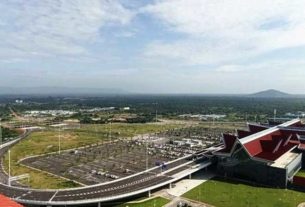As the chair of the Preparedness Centre for the Asean Community (PCAC), Prime Minister Prayut Chan-o-cha must be accountable for any delay or ineffective implementation of all Asean blueprints.
Although Thailand has done very well on the political-security and social-cultural pillars, the implementation of economic action plans has been incomplete.
The prime minister must save the day and push further concerned ministries and agencies to review and amend existing laws to integrate the country fully with the 625 million community in the next 23 days, before the December 31 deadline.
At the recent Asean Summit in Malaysia on November 22, along with the other nine leaders, the PM happily signed the Kuala Lumpur Declaration for the Establishment of Asean Community and the Asean Community Vision 2025. His signature will not only serve as a testimony of the level of his commitment and sincerity but that of the country as well.
It must be noted that Prayut is the first Thai military leader who has shown serious interest in Asean, wishing to see Thailand as the hub of everything Asean — be it in trade, investment, logistics, tourism et al.
Since he seized power last May, he has been occupied with key tasks of making Thailand more accessible for Asean members and dialogue partners so the Thai economy can fully integrate with the regional and global economy. Early this year, he replaced General Tanasak Patimapragorn as the PCAC chair because he was not happy with the lack of Thailand’s overall progress on Asean.
Unless Prayut hits the turbo charger on the economic pathway before the year-end, he could also suffer from a similar setback. His scorecard as the PCAC chair will continue to be at the dismal level C only. However, he can easily score an “A” if he can pick on the so-called “high-hanging fruit” – non-tariff barriers such as improving skills mobility for other Asean professionals, increasing Asean investment to a 70 per cent ratio, expanding positive lists on progressive liberation on services, to name a few.
For example, among the founding Asean members, Thailand has the most disappointing record on compliance with the Mutual Recognition Arrangements (MRAs). At present, the Asean Chartered Professional Engineers Register has recorded more than 1,250 engineers and 250 architects. As of November 2014, Thailand issued only three licences for architects and nil for engineers from Asean, Meanwhile, Singapore and Malaysia issued 218 and 199 for the former and 58 and 32 for the latter, respectively. This simply shows that Thailand is not really serious about implementing the MRAs. As of last year, even Myanmar showed a healthy statistic, authorising 72 architects and 12 engineers from Asean members.
At least seven pieces of legislature related to copyright, engineering, immigration, trademarks, extradition, foreign business and foreign workers need to be pressed for further progress due to bureaucratic red tape and lack of coordination. Indeed, most of these laws do not need any amendment. Only the trademark protection requires new legislative action, as Thailand is still not a signatory to the Madrid Protocol. Under the current economic blueprint, all Asean members are encouraged to accede to this protocol whenever possible.
Under the new Asean Economic Blueprint 2025, Thailand must work harder to deepen economic integration with Asean. So far, each ministry and agency is still working in a silo. Very little attempt has been made to synergise with one another. It is a shame that this government has not been able to fulfil its Asean pledges in time by year-end, even though there was no political meddling involved.
At this juncture, Thailand has a great opportunity to come up with a comprehensive structural transformation that can maximise use of the AC. From now on, it must be clear that any national policies and plans should be Asean-centred all the way. In other words, as far as economic matters are concerned, Thai or Asean perspectives or policies must be the same — what benefits Thailand also benefits Asean and vice versa.
Nearly Bt10 billion was spent in past years to increase awareness and understanding among government officials and Thai people of the importance of Asean to them and their country. In retrospect, judging from the current outcome, it was a huge waste of financial resources.
Quite frankly, beyond the hype and hullabaloo, the overall qualities of Thailand’s preparedness are still very mediocre.
Only a Thailand that is well integrated within Asean can fit into the broader connectivity schemes that run through numerous economic and infrastructural corridors – such as the Master Plan for Asean Connectivity, East-West Corridor, One Belt and One Initiative and other new trade routes both on land and sea.
Source: http://www.nationmultimedia.com/opinion/Thailand-yet-to-fulfill-ASEAN-blueprints-30274429.html
